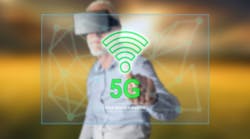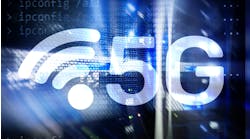Ways that 5G enables digital twinning & augmented/virtual reality to industry
By Thomas Norén, head of dedicated networks with Ericsson
The fast speed, reliable connectivity and low latency of 5G networks is enabling massive leaps forward in mixed reality, whether through fully-immersive environments in virtual reality (VR) or by combining virtual elements with the real world with augmented reality (AR).
While these applications often bring to mind gaming and other entertainment use cases, the technology has the power to transform everything from urban planning to education. And it will have a major impact on Industry 4.0 as mixed reality allows for things like remote maintenance, digital twinning and more. Let’s explore…
How 5G &VR work together
While virtual reality and augmented reality applications are not new, the computing power needed to make these experiences truly immersive and valuable for industry has only recently become available, as enabled by 5G.
Synchronizing the real world and the actions of a user with a digital environment requires a massive amount of computer-processing power and bandwidth. If that was all done on the AR/VR device itself, equipment would be too bulky to be practical. This, coupled with the lag in connectivity as experienced with previous generations of mobile networks, has prevented mass adoption of mixed reality in the past.
Now, the heavy graphic-rendering that occurs in the creation of a virtual environment is distributed between the device and the edge cloud, which cuts the lag time needed to perform processes such as head tracking, controller usage and recognizing hand movements. A fast and reliable 5G connection makes this possible. An example of this in an industrial setting could be a maintenance technician walking around the factory floor with AR goggles, looking at machinery with a heads-up-display informing her about efficiency rates, trouble spots, etc.
Hyperbat’s digital twin connectivity
Consider this use case—Ericsson recently partnered with communications-service provider BT and other technology leaders to build a digital twin proof-of-concept for Hyperbat, the UK’s largest independent vehicle-battery manufacturer. The technology allows the company’s design, engineering and manufacturing experts to cooperate on a 3D-engineering blueprint, creating a collaborative mobile workforce that will boost efficiency.
The digital twin (a digital representation of a physical object) is viewed through a digital interface, like a tablet or virtual reality glasses. It brings together 5G-enabled Industry 4.0 use cases like real-time data from IoT-sensor networks and graphic rendering through AR/VR to enable workers to troubleshoot complicated machinery, as well as conduct predictive maintenance and make repairs with minimal downtime.
At Hyperbat’s Coventry production facility, design and engineering teams will be able to virtually walk around and interact with 3D life-sized objects in real time using a digital interface. Employees in multiple locations will be able to build a 1:1 scale physical products on the factory floor, review designs in real-time, perform maintenance and retro fit high-performance batteries into specific dimensions.
Hyperbat is hopeful this pilot will lead to other efforts, leveraging 5G connectivity to enable configurable and flexible production lines.
Mixed reality & 5G driving Industry 4.0
Overall, these technologies are driving rapid transformation in industries that are looking to embrace digitization, integrate automation and drive innovation. Powered by the high speed, reliable connectivity and low latency of 5G, mixed reality will be a critical part of the next industrial revolution.



